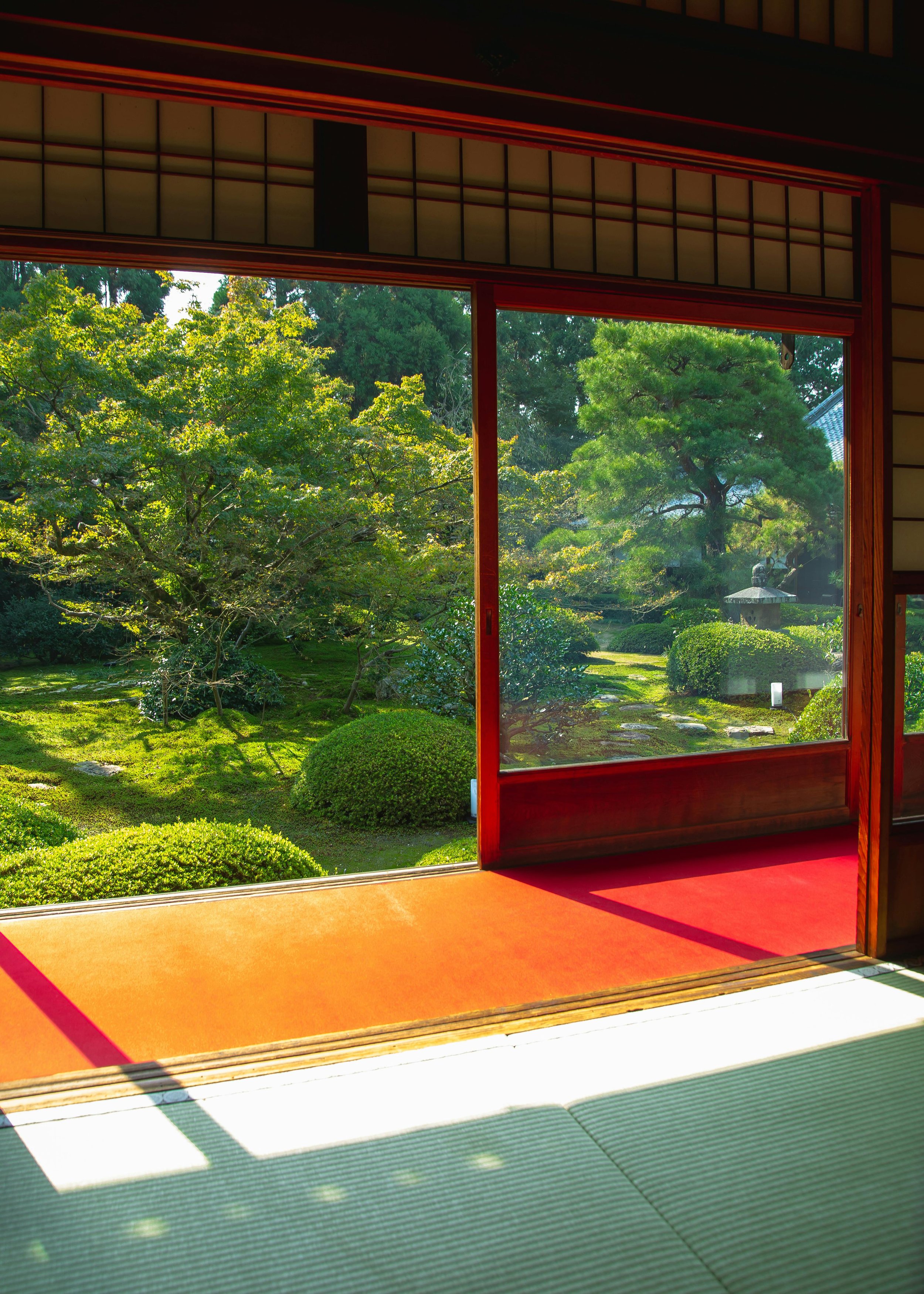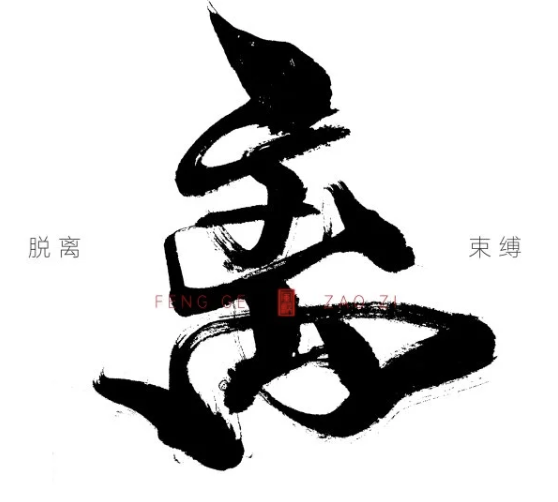
斷. 捨. 離 Dan-sha-ri
Let it go - A Practice to a sample, peaceful way of being
斷捨離, Danshari
Inspired by the concepts of "Cutting", "Release ", and "Separating" in Indian yoga
In recent years, concepts of simple living such as "minimalism," "Hygge," "Essentialism," and “斷捨離Danshari" have gained popularity. These philosophies emphasize simplified living in both physical spaces and mental states. They encourage people to declutter their lives physically, mentally, and emotionally to create peace and fulfillment through mindful choices. Do you truly understand what Danshari is and how to apply it practically in your life?
Danshari is not simply about throwing away unnecessary things. Rather, it's a process of self-dialogue and reflection where you gain a deeper understanding of what you truly need and want in your life. It's about separating things, people, and matters that no longer serve you from "yourself," making space for new abundance to flow in.
"Dan" (断/斷) - Cutting: Break free from desires and let go of ingrained habits and preferences.
斷絕慾念 The practice of break free from desires.
"Sha" (捨/舍) - Release: Willingly letting go and actively releasing attachments to objects or thing.
捨棄雜念 The practice of let go of distracting thoughts
"Ri" (離/离) - Separate: Detach from people, things, and emotions tied to possessions
脫離束縛 The practice of break free from constraints
斷捨離 Danshari originates from the concepts of "cutting", "Release", and "separating" in Indian yoga, meaning to cut off desires, discard mental attachments, separate from unpleasant past experiences, learn to let go, and live freely. The founder of Oki-do Yoga 沖正弘 Masahiro Oki, inspired by the concepts of Danshari in Indian yoga, proposed and advocated this yoga philosophy in 1976. Later, his disciple 山下英子 Hideko Yamashita popularized it, expanding the original yoga practice focused on "mental attachment" into a practical approach more accessible and applicable to everyday life for the general public.
The danshari approach proposed by Hideko Yamashita includes the following three main principles:
1. "Dan" (断) - Cutting : Break free from desires and let go of ingrained habits and preferences:
This is about the philosophy of "Take in ": Before buying or accepting items, think from the perspective of "yourself" about what things are most suitable for your current self, make you feel happiest and are most frequently used. Only purchase things that are useful, truly needed, and genuinely liked, avoiding impulse purchases, repeat buys, and unnecessary consumption.
2. "Sha" (捨) - Release: Willingly letting go and actively releasing attachments to objects or things
This is the philosophy of “Release ": Clear out and organize old items, donate, resell, or give away things you don't use or have duplicates of. Let go of thoughts like "it's a pity," "don't waste," or "might be useful in the future." Keep only the things you truly need right now.
3. "Ri" (離) - Separate: Detach from people, things, and emotions tied to possessions.
The final "Ri" (separation) is actually a philosophy of the "heart", related to emotions. Try to think about and feel the connection between yourself and your possessions: What reason makes you keep this item? A person? A memory? Or is it an emotional constraint? Let go of seeking self-identity and emotional support through objects, and through the continuous practice of "cutting" and "discarding", detach from the attachment to possessions, allowing the spirit to be liberated and regain freedom.
Why It's Hard to Let Go -1
Most of us aware that deep inside, material abundance cannot fill the void in our souls. Excessive desires and constant comparison unconsciously trap us in a series of attachments, blurring our ability to discern what we truly need. Consequently, we accumulate unnecessary possessions, emotions, and beliefs that not only take away our living space, but also in our mind. This "hoarding" creates a murky energy that accumulates into a sense of heaviness in our daily life. invisibly obstructing our energy flow and making our mental load increasingly burdensome.
Experts believe that letting go of things requires practice, and with more practice it becomes second nature. Therefore, don't be too hard on yourself, allow yourself to feel frustrated and down, and give yourself time to rest and regain motivation. Humans are emotional beings. Everyone has a mix of these three elements, just in different proportions and intensities. Knowing which type you tend towards most (understanding the reasons and weaknesses) allows you to apply the right remedy, making it easier to begin the decluttering process.
Not being able to make decisions
Decluttering requires us to make many decisions, such as whether to keep or discard items, donate or sell them.
When faced with so many choices that need decisions, we may experience decision paralysis, unsure of how to make choices that suit us.
Tips:
Establish clear criteria: For example, set rules like "items can be donated or sold, but must be discarded if not dealt with within two weeks" to help you make decisions faster.
Break down big goals: Divide large decluttering goals into smaller, manageable steps to reduce decision pressure. For example → organizing the sock drawer.
Shopping As Stress Relief
After making some progress with decluttering, it's easy to become careless and think there's space at home for new things - that's when you've fallen into the trap! The key is changing unhealthy consumption habits, avoiding the influence of advertisements, social media, and surrounding environment that lead to purchasing unnecessary items or falling into cycles of overconsumption.
Tips:
Create a shopping list: Before purchasing, write down what you truly need to avoid impulse buying.
Let your shopping list rest: Don't check out immediately. Put items in your cart and wait for a while (like a week or more) - only purchase if you still feel it's necessary.
Examine your values: Reflect on whether your consumption habits align with your values and long-term goals.

Why It's Hard to Let Go -2
In general, here are three types of mindsets that we have difficulty letting go of things:
Reality Avoiders: Too busy, too tired, have other things to do, no time to organize, and thus even though they're unsatisfied with their daily living space, they make no improvements, therefor nothing changed.
Past Dwellers: Cherish the past, have stories and too attached to many items big and small, feel everything is important, therefore they all stay.
Future Worriers: Think they might need things someday in the future, or worry that when they need something it won't be available if they give it away. So they keep items despite these no longer serving a purpose or bringing fulfillment.
Guilt and Emotional Attachment
Regarding past relationships and possessions, we may have emotional dependencies and attachments, feeling reluctant to let go because they represent special emotional value. We might even feel guilty, thinking that discarding items (as wasteful) or cutting emotional connections is wrong. These emotional bonds make it difficult to practice danshari. However, simply being aware of this reason is already significant progress. The next step is to shift our perspective and understand that these emotional values are merely personal attachments and projections. Once we let go of these thoughts or create new meanings, our view of possessions will change. Like Japanese minimalist Sasaki Fumio, who initially couldn't let go of his books until he realized that "books were just objects he had invested with hopes of gaining positive recognition from others," and then understood the core issue wasn't in the books themselves.
Social Pressure and Expectations
Society's values regarding material possessions and consumer culture often create pressure against decluttering. We may also be influenced by others' expectations and be unwilling to give up possessions or change existing habits simply because they align with society's definition of success. For example, society considers having a car and house as markers of success, so if you don't pursue buying a car or house, or even want to sell your existing car or house, others certainly won't understand, which can affect your decluttering decisions. At such times, understanding your own values and having the determination to stay true to yourself without being influenced by others' opinions becomes crucial.
Imagine You're Moving
Many people can declutter quickly, often due to major life events like moving or going abroad, where external pressure forces immediate action. While most people may not move many times in their life, we can still declutter with a moving mindset. Open your eyes, look around, and imagine you're moving. With cardboard boxes and bubble wrap ready, think about which items you would carefully pack and which you would leave behind. The things you wouldn't take with you when moving represent what's dispensable in your current life - things you could do without - so bid farewell to these unnecessary items.
When moving, we typically pack by area - from the living room, bedroom, bathroom, and drawers to the uppermost cabinets, dismantling our old home step by step. You can apply this same perspective to each area of your home, sorting out things you wouldn't take with you during a move, then sell, donate, or dispose of them. Your home will immediately feel fresher. You can even practice this farewell mindset with your digital environment.
By Christy Lin






